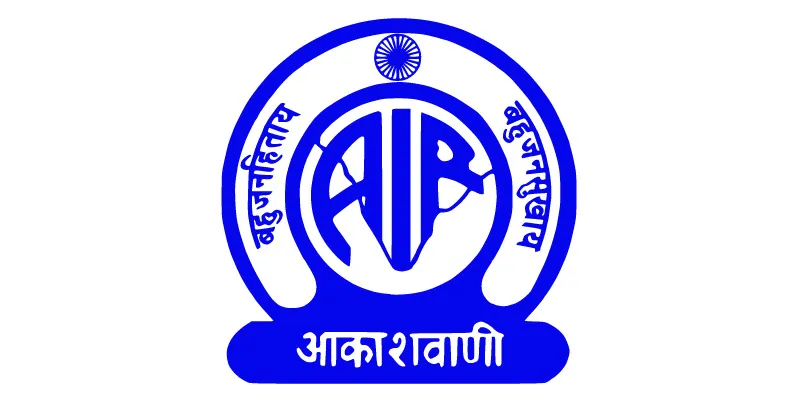Celebrating 80 years of AIR- the largest national public broadcaster
Our favourite national public broadcaster- the one and only ‘All India Radio’ has turned 80! Established in 1930, it went through many variations and partner-changes, before being deemed the ‘All India Radio’ on 8th June, 1936.
According to an agreement made with the concerned British authorities in July, 1927- the Private Indian Broadcasting Company LTD was given the green signal to open two radio stations in the country- one in Mumbai (then Bombay) and the other in Kolkata (then Calcutta). The first radio program dates all the way back to the Colonial Age, where under the guidance of some British personnel, the segment was first broadcasted in July, 1923 by the Radio Club of Mumbai. Four months following this, the Calcutta Radio Club released its first segment on air as well.

Image : Wikipedia
However, the Company went into liquidation in March, 1930 and the reigns of the broadcasting network went into the hands of the Imperial Government, who then changed its name to ‘Indian State Broadcasting Service’ a month later. It was only six years later that the Company, under Sir Lionel Fielden got its name of ‘All India Radio’ on 8th June 1936, five months after the company released its first official news bulletin.
Today, the radio broadcast network may be getting trumped by television as well as the digital networks, but at one time- AIR was the only form of information and connectivity in the country. It’s dominating influence and powerful stigma was greatly understood during the fight for independence, where our nationalists, who often belonging to the lower, middle and upper-middle classes would receive the country’s news from. It became a primary medium of information and network for most and is responsible for many of the events that took place, that fill the pages of our history books today.
According to Better India, with over 415 radio stations in about 23 languages and 146 dialects, AIR which is also called ‘Akashvani’ since 1956, is possibly among one of the largest radio broadcasters in the world. It has about a 99 per cent population coverage and roughly 18 FM channels.
When India achieved independence in 1947, AIR had about six main stations across the nation- Calcutta, Delhi, Mumbai, Chennai, Lucknow and Tiruchirappalli. Three stations that were a part of the country, but due to strategic location-divides fell under the Pakistan quotient, were at Lahore, Peshawar and Karachi.
The network launched its first exclusive commercial channel called ‘Vividha Bharati’ in October, 1957 to compete with the equally successful Radio Ceylon, which is the oldest radio station in Asia. We remember ‘Vividha Bharati’ because it held one of the most popular and followed shows of the decade- ‘Binaca Geetmala’, which used to play the all the crowd favourites. Some of the other famous shows of the channel were ‘Hawa Mahal’- which featured radio plays on novels and theatre and ‘Santogen ki mehfill’- which was a comedy series.
AIR didn’t just provide comedy and drama to its vast audience. It served some deeply impactful political memorandums as well. For instance, during his visit in 1959- Che Guevera recorded an exclusive interview with K.P. Bhanumathy on the radio channel. Over the years, AIR has been used by many political leaders to try and get their message across to the millions listening across the nation, including even current-day Prime Minister Narendra Modi’s ‘Mann Ki Baat’.
The iconic tune of the All India Radio was actually composed by a composer from Prague- Mr. Walter Kaufmann who spent a whole twelve years in Bombay, working with the media industry- radio and film. What not too many people know, is that AIR is responsible for giving them the legend that is Big B- who in his early years had sought a job at the station for his deep baritone voice that we all know and love. The then AIR employee Ameen Sayani, who later went on to become a popular radio presenter rejected Mr. Bachchan who then went on to play lead actor in films like Hrishikesh Mukherjee’s ‘Anand’ and Ahmad Abbas’ ‘Saat Hindustani’- branching on the onset of his legendary career.
So here’s celebrating this 80 year old foolproof system of educations, news and entertainment that continues to mark ahistorically distinguished place in our lives, that no television or digital space can hope to compete with.
(Disclaimer: The views and opinions expressed in this article are those of the author and do not necessarily reflect the views of YourStory.)







